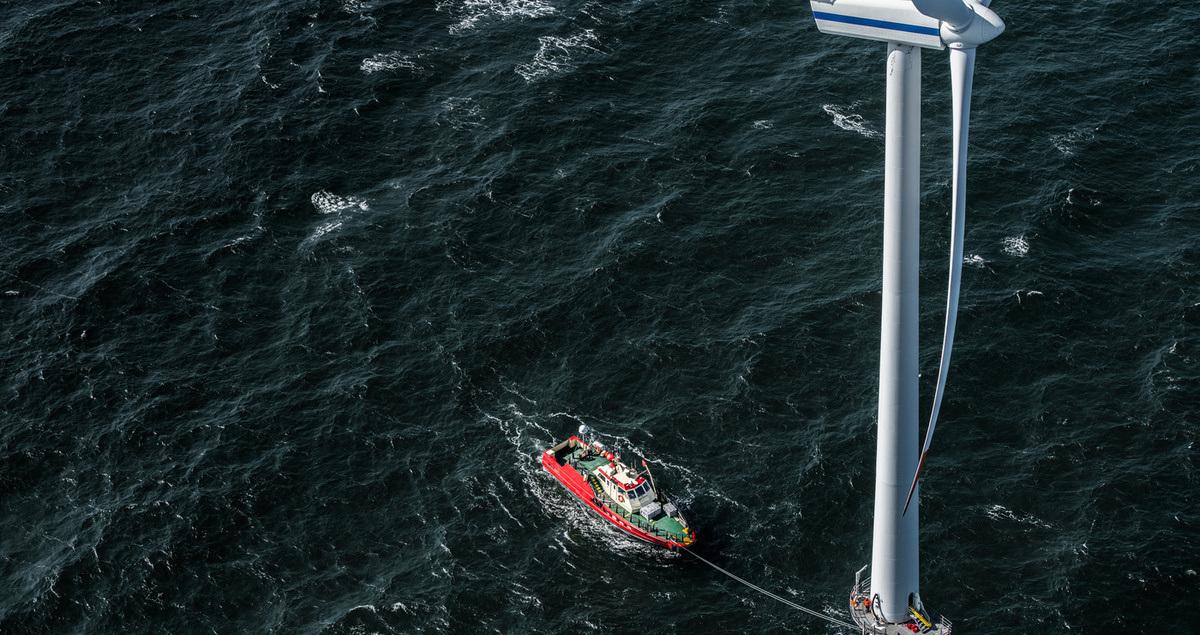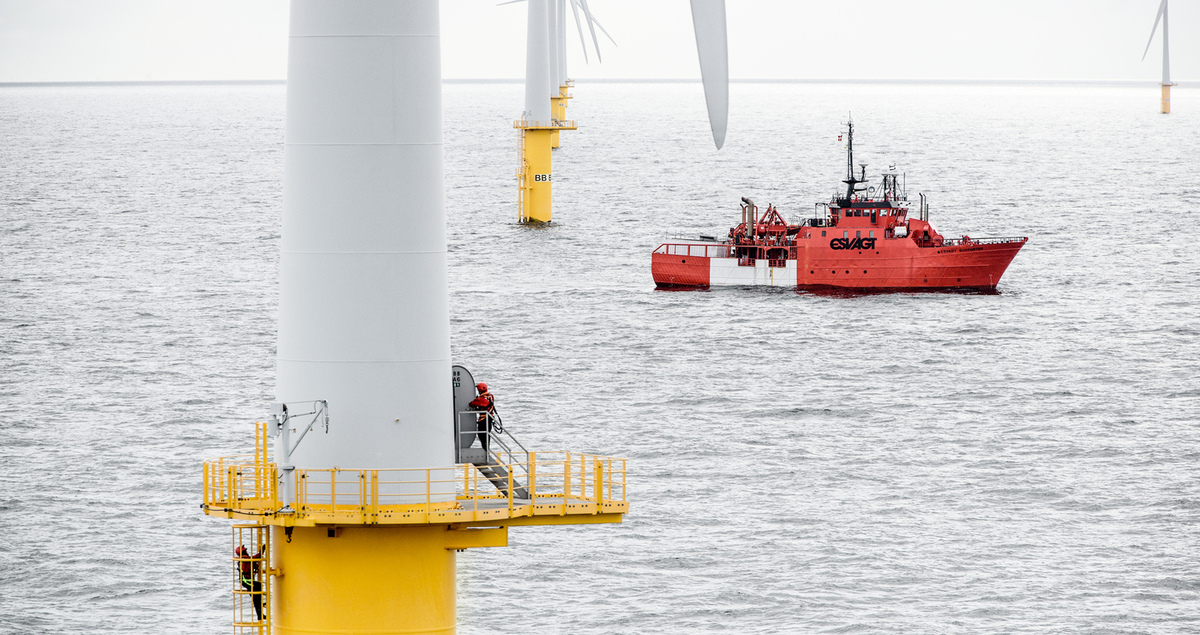The intelligent tech propelling offshore wind’s future

We may call them offshore wind “farms” but the phrase risks understating the significance of this thriving power source.
In the past few years, offshore wind has flourished, driven by its success in Europe and, more recently, growing adoption in Asia and the US.
The Global Wind Energy Council (GWEC) called 2019 the best year in the history of the sector and has noted that it has been less affected by the COVID-19 pandemic than many other parts of the energy market.
Less and less reliant on policy support, its generation capacity can now match gas-fired power stations. But as with the latter, operators of wind power plants – as they should rightly be called – strive to capture more wind and increase their capacity further still.
Ever larger turbines are part of this, enabling more power to be generated per blade rotation. Alongside this, clever technology is helping to squeeze the most power from offshore plants by ensuring they run efficiently and by avoiding unscheduled downtime.

Intelligent wind power
Offshore power plants are monitored by operational centers typically located onshore. If a fault occurs, the center can troubleshoot and either fix the fault remotely or dispatch a technician to repair the turbine.
However, on-site repairs pose several challenges. As turbines are usually located miles from land, maintenance involves a boat trip to the site, with inclement weather and sea conditions often delaying repairs. It also comes at a high cost.
AI and machine learning (ML) are now coming to the rescue, helping to prevent unscheduled outages through monitoring and predictive maintenance.
“Wind turbines transmit thousands of signals every second. Some of these signals go to the power plant controller to help with load balancing and make continuous adjustments in power,” explains Maiken Gustafsson, Lead Senior Specialist, Performance & Diagnostics, at MHI Vestas Offshore Wind.
“Other signals are transmitted to a central database where advanced AI, machine learning models, and digital twin technology is applied to evaluate whether any of the turbines require proactive maintenance.”
The accuracy of the predictive maintenance and all AI/ML-related techniques are highly dependent on large amounts of data from a huge number of turbines to spot any abnormal patterns, adds Gustafsson. The system draws on both historic and real-time data to improve the accuracy of its predictions.
By acting preventatively based on these insights, operators of offshore wind plants can avoid unscheduled downtime and optimize energy production to achieve the highest possible output (Annual Energy Production, AEP).

A 360-degree view
A mix of AI, ML and digital twin technology – which creates a digital “copy” of the plant – gives operators a 360-degree view of the wind plant to assess risks and manage future maintenance needs.
For example, these technologies can help forecast the life expectancy of a turbine or the onset of material fatigue of a part. That way, equipment can be replaced proactively, as part of scheduled maintenance, reducing the risk of facing the time, cost, and operational impact of reactive repairs.
They also enable operators to run simulations, for example to test how an increase in electricity output might affect turbine components’ longevity.
Adding to financial and performance benefits, using remote technology also helps with health and safety as technicians need not be sent out for emergency repairs in adverse weather conditions.
Talking turbines
At the same time, communications between the plant and the operations center and between the turbines themselves are becoming imbued with more intelligence.
Wind turbines transmit thousands of signals every second.
“Previously, offshore wind turbines would each run like an individual power plant, but with the growth of remote management and AI they are now morphing into one coordinated power plant. In this way, operators can ensure that the entire wind park acts in coordination,” highlights Gustafsson.
This makes it easier to optimize the plant’s running, for example to keep overall capacity up when a turbine is offline for servicing. It also affects how the plant deals with issues such as turbulence and wake. Turbulence needs to be avoided so that as much air as possible can blow through the plant, maximizing electricity generation. Similarly, wake – where the turbines at the front deflect wind from the rest of the facility – must be reduced to even out the flow of wind. By adjusting the pitch and yaw dynamically for each turbine, relative to the direction of the wind, overall throughput can be maximized.
Again, AI and ML help wind power plant operators make these adjustments – even automatically depending on wind conditions.
Key to the energy grid of the future
The proliferation of “intelligent” offshore wind power plants will ultimately also help integrate them into the decentralized smart grids of the future.
Smart grids will use AI and ML to balance energy supply and demand across a growing number of participants in the energy market. Instead of a utility company channeling power to where it is needed, the grid of the future will comprise a multitude of energy sources and energy users. These will include homes, businesses, renewable power sources, energy storage, and electric vehicles, to name a few.
Digitally enabled offshore wind plants could communicate directly with the grid to help decide how best to allocate energy resources at any particular time.
Operators can ensure that the entire wind park acts in coordination.
Far from just being humble “farms” at the edges of countries and their energy systems, offshore wind turbines are an increasingly integral part of our new smarter and decarbonized grids.
"Vestas Wind Systems A/S (Vestas) and MHI have signed an agreement to expand their partnership in sustainable energy. The strengthened partnership entails that Vestas will acquire MHI's shares in the MVOW joint venture, and MHI will acquire 2.5 percent in Vestas and be nominated to a seat in Vestas' Board of Directors.
Through the strengthened partnership, Vestas makes an emphatic long-term move in offshore wind energy to become a leading player in offshore wind by 2025 and to expand the two companies' overall leadership in sustainable energy. The companies also aim to meet customer needs across a wider range of the value chain and increase their global leadership in sustainable energy solutions. To that end and underlining the long-term goal of the agreement, Vestas and MHI will also plan for collaborating in green hydrogen as well as a joint venture in Japan to secure accelerated growth for onshore and offshore wind energy."
Discover more about offshore wind power





